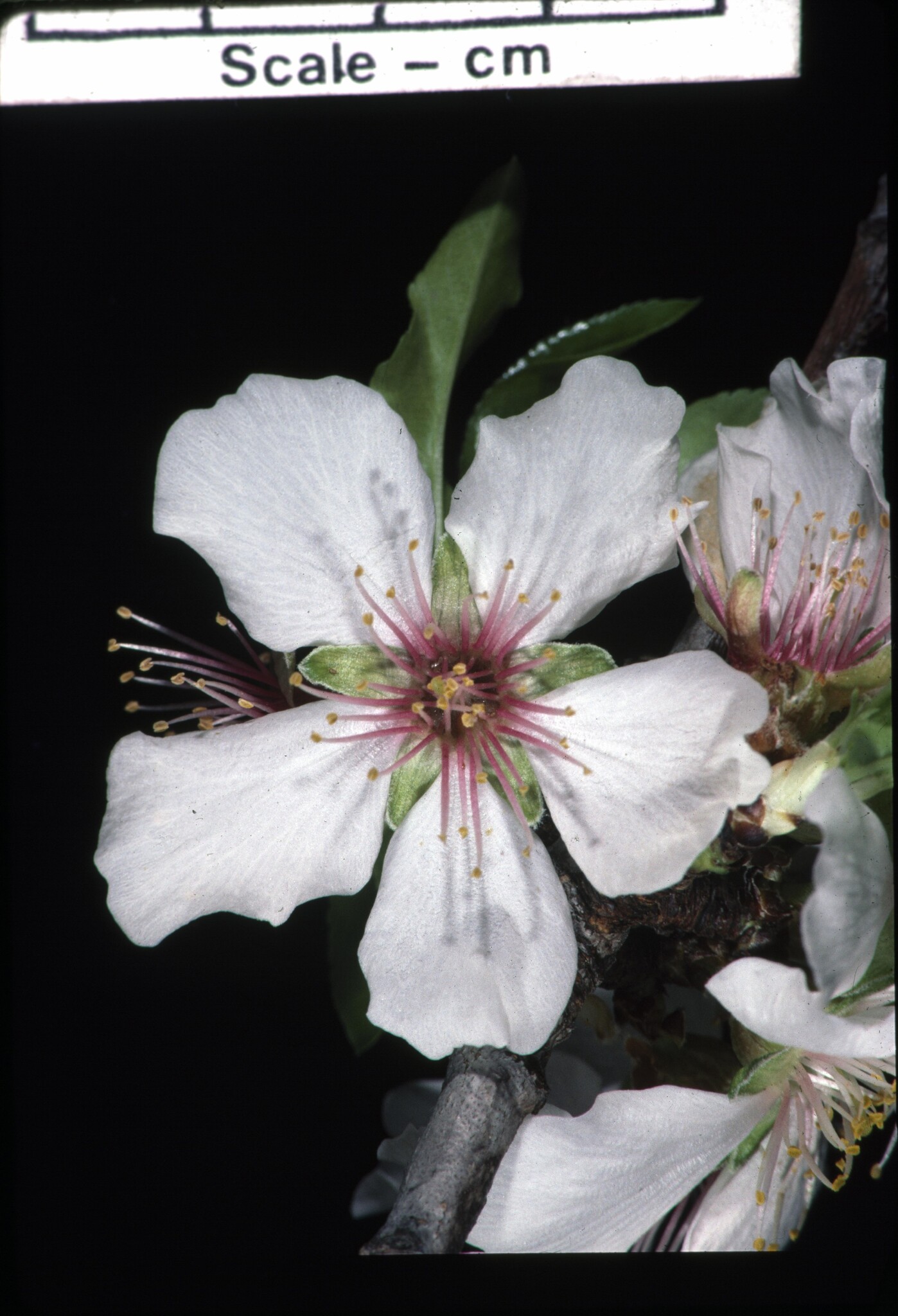
Prunus is the ancient Latin name for the European Plum.
Deciduous or evergreen shrubs or trees. Bark usually rough and grey but can be very striking as in p. serrula, with its shiny reddish brown bark, or p. maackii, which has smooth brown bark peeling like a Silver Birch. Leaves simple, alternate, often toothed. Some cultivars have reddish purple leaves, and some deciduous species colour well in the autumn. Flowers regular, solitary or in inflorescences, mostly racemes, umbels or corymbs. Flowers bisexual, with 5 sepals and usually 5 petals although semi-double or double cultivars exist. Petals range from white through cream to pink, and red. Stamens many, inserted with the petals on the calyx tube. Ovary a single carpel with 2 ovules. Fruit a drupe with a fleshy outer layer usually surrounding a single seed (the stone).
Treatment by Rob Cross.
More than 400 species distributed mostly in northern temperate regions although extending into tropical montane areas of SE Asia and S America. 2 species, P. brachystachya and P. turneriana, extend from New Guinea into NE Qld.
Seed, cuttings, and budding.
Prunus contains a number of economically important fruit crops such as apricot, peach, nectarine, plum, cherry and almonds. Also important are the ornamental taxa such as the long-cultivated Japanese Flowering Cherries. Many species and cultivars are spectacular in flower, often being the highlight of winter and spring gardens in SE Australia. A number of species and cultivars were among the earliest introductions into Australia and were in Victorian nursery catalogues from 1855. The timber of some species, for example P. serotina, is prized by cabinet-makers. P. spinosa L., Blackthorn (Sloe), has a wide range of medicinal and other uses and is occasionally listed (see Nicholson, 1999).
Shrubs or trees; leaves simple, and alternate; flowers with 5 sepals and petals and many stamens; stamens and petals inserted on the hypanthium; fruit a drupe.
VIC: The Basin (old site of Chandlers Nsy); Dandenongs (The National Rhododendron Garden, 'Pirianda' garden); Melbourne (Royal Bot. Gds); Monbulk (Flemings Nsy).
Miyoshi (1916), Wilson (1916), Ingram (1948), Chadbund (1972), Jefferson & Wain (1984), Cross & Looker (1989).
Source: (2002). Rosaceae. In: . Horticultural Flora of South-eastern Australia. Volume 3. Flowering plants. Dicotyledons. Part 2. The identification of garden and cultivated plants. University of New South Wales Press.

Deciduous tree to 10 m tall. Leaves narrowly ovate to obovate, 10-20 cm long, abruptly long-acuminate, margin coarsely serrate with acuminate serrations ending in bristle-pointed tips, hairless or only slightly hairy; stalks with one or more glands; stipules, if present, finely divided. Flowers in stalked, pendulous corymbs 40-65 cm wide, of 5-6(-8), white to red or yellow-green flowers, single or double. Flower stalks from 2-7.5 cm long; calyx tube funnel-shaped. Fruit purple-black but rarely formed.
A very popular flowering tree with many cultivars available.
The nomenclature of the Japanese Flowering Cherries has been somewhat confused, since the cultivars have been assigned by different authors to various species, including P. serrulata, P. speciosa and P. lannesiana. Determining the ancestry of the Japanese Flowering Cherries is difficult due to the propensity of many native Japanese Prunus to hybridise and the fact that the selection of cultivars has occurred over a long period. The proposal of Jefferson and Wain (1984) to refer the Japanese Flowering Cherries to the group name Sato-zakura (from the Japanese for Village Cherries) is followed here.
Of unknown hybrid origin, long cultivated in Japan.
Cross & Looker (1989), Kuitert (1999).